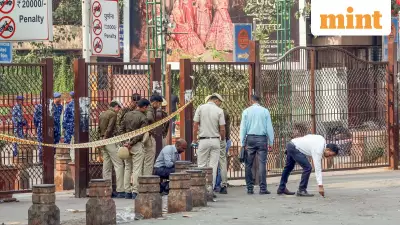
Historic Voter Turnout Reshapes Seemanchal Political Landscape
The Seemanchal region of Bihar witnessed an unprecedented democratic exercise during the second phase of elections held on Tuesday, with record-breaking polling percentages signaling a major political shift. Political analysts indicate that the massive voter participation has virtually decimated the Asaduddin Owaisi-led AIMIM while boosting the fortunes of Congress and RJD in this crucial region.
Polling Numbers Tell a Compelling Story
The four districts of Seemanchal achieved an remarkable average polling percentage of 73.2%, significantly higher than previous elections. Kishanganj led the way with 76.26% voter turnout, followed closely by Katihar at 75.23%, Purnia at 73.79%, and Araria at 67.7%.
This extraordinary participation has left political observers puzzled, with many scrambling to identify the exact reasons behind such enthusiastic voter engagement. The long queues at polling booths, featuring women in their festive attire and youth from various castes and communities, indicated mass fervor for the democratic process.
AIMIM's Dramatic Decline
The voting patterns suggest a substantial setback for AIMIM, which had won five seats in the 2020 elections. The party had previously secured victories in Amour and Baisi seats in Purnia district, Jokihat in Araria, along with Bahadurganj and Kochadhaman in Kishanganj.
According to political analysts, current trends indicate that AIMIM might only retain the Amour seat while facing defeats in the remaining four constituencies. The party appears to be yielding gains to RJD in Baisi and Jokihat, and to Congress in Bahadurganj and Kochadhaman.
Coalition Dynamics and Seat Projections
The NDA alliance seems to have maintained its previous performance, with BJP and JD(U) likely holding their respective tallies of eight and four wins from 2020. However, JD(U) might face a setback in Barari, where Congress could gain ground, though this could be balanced by JD(U) potentially wresting the Manihari (ST) seat from Congress.
Congress is projected to maintain its five-seat victory count from 2020, with likely wins in Kadwa, Barari, Bahadurganj, Kishanganj, and Araria. Meanwhile, RJD shows significant improvement, potentially increasing its winning tally to four seats - a substantial jump from the single seat it secured in 2020.
RJD's expected victories could come from Baisi, Rupauli, Kochadhaman, and Jokihat, though the party faces potential challenges from Sarfaraz Alam of Jan Suraaj in some constituencies. In Balrampur, CPI(ML)'s Mahboob Alam aims for his third consecutive victory.
Factors Behind the Polling Surge
Political experts identify three primary reasons for the massive voter turnout. First, widespread suspicion that the special intensive revision of electoral rolls could benefit NDA, particularly BJP. Second, persistent campaigning by Owaisi for AIMIM candidates, whose image as BJP's 'B-team' continued to influence voter perception. Third, the need to counter allegations of 'ghuspaithiyas' (illegal immigrants).
The INDIA bloc leaders, including Rahul Gandhi, Priyanka Gandhi, Imran Pratapgarhi from Congress, and Tejashwi Prasad Yadav from RJD, successfully galvanized voters toward the Grand Alliance. Meanwhile, NDA maintained its core support base with almost static voter numbers.
The highly polarized bipolar voting between NDA and Grand Alliance pushed smaller parties like AIMIM and Jan Suraaj to the margins, creating a clear two-front contest in the region.





